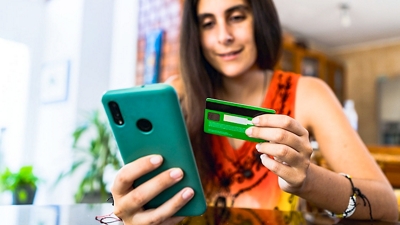Biometric authentication.
Time to read: 3 minutes

Time to read: 3 minutes


Face ID, Touch ID, and Fingerprint ID are common biometric authentication methods available on many phones and other electronic devices.

Using biometric sign-in on your devices adds an important layer of security for your personal information and accounts.

At
Today, most new smartphones, tablets, laptops, watches, and desktop computers are equipped with technology that can recognize you in an instant. They use built-in digital sensors, cameras, fingerprint scanners, and microphones to collect physical or biological information about you. These representations of your unique characteristics are sometimes called biometric identifiers.
Facial recognition software analyzes your features to create a fool-proof, mathematical map of your face.
Scans of your fingerprint or palm are collected to develop an unmistakable replica of your skin’s lines, ridges, loops, whorls, and arches.
Voice recognition technology captures the sound of your voice, as well as the way you speak, so only you can tell your virtual assistant what to do.

Face, Touch, and Fingerprint ID let you sign into your devices or log into your online accounts and apps. These on-device biometric authentication methods help safeguard the information stored on your devices, in your apps, and online accounts. For example, if you like to use mobile banking, you’ll find that many financial institutions now require some form of biometric verification in addition to a password or PIN.
Here are three reasons we encourage you to enable biometric sign-in on your devices and with your online accounts:
If you want to prevent others from accessing your device and its contents, on-device biometric authentication offers the highest level of protection. Face ID, Touch ID, and Fingerprint ID are far more secure than passwords. Here’s why:
Your physical features are unique to you.
Your face or fingerprint data can’t be shared.
Scans of your face and fingerprints are converted into a unique mathematical representation that’s stored locally on your device.
This mathematical representation of your biometric data can’t be stolen, copied, or converted back into a scan of your face or fingerprints.
Once you’ve enabled biometric authentication on your device, you can instantly unlock your phone, sign in to your apps and online accounts, and even authenticate purchases. It’s as easy as posing for a selfie or touching a sensor with your fingertip.
No more memorizing multiple passwords.
No more forgotten passwords.
No more searching for misplaced passwords.
No more mistyping a password.
The biometric data you use for authentication purposes remains stored on your device.
It’s easy to get started on your devices and in your
Learn how to set up Face or Fingerprint ID on your Samsung phone or tablet. Use a different brand? Your steps may vary slightly.
Set up Face ID on your Apple device, then use it to unlock the device, sign in to apps, and more.
Once you’ve enabled Face or Fingerprint ID on your phone or device, you can use the feature to access your

Take control of your privacy on websites outside of

Learn more about cookies, other online tools, and tracking technologies, including how they work.

Get resources for identity theft and internet fraud prevention.